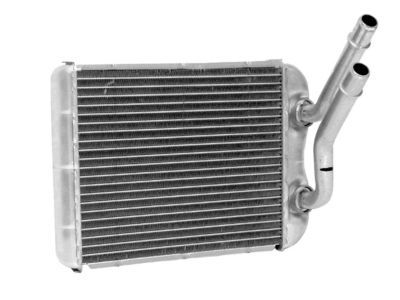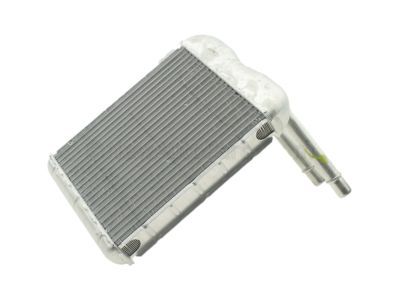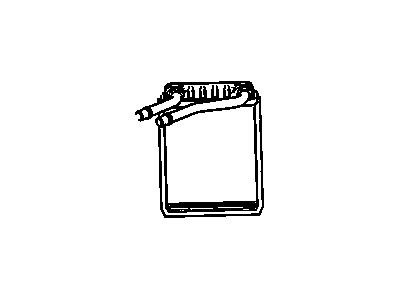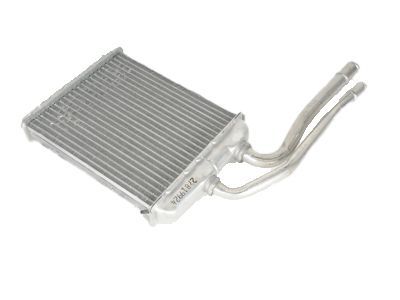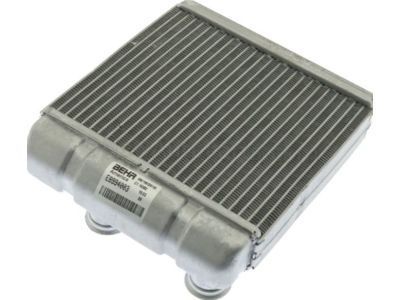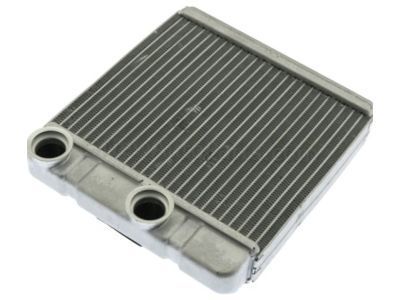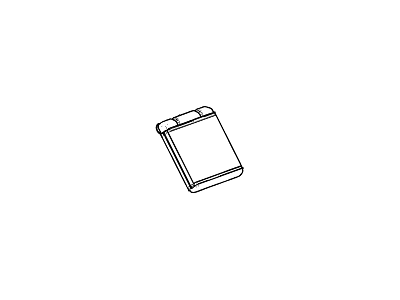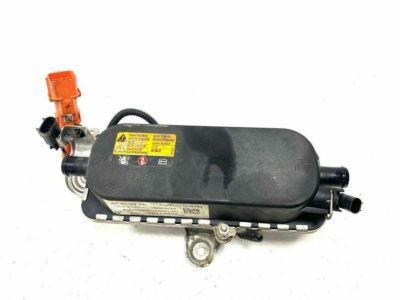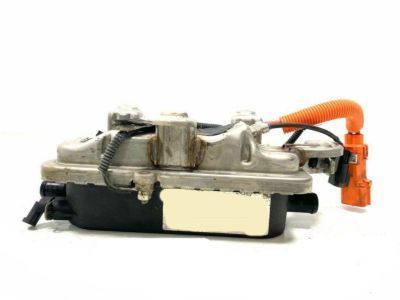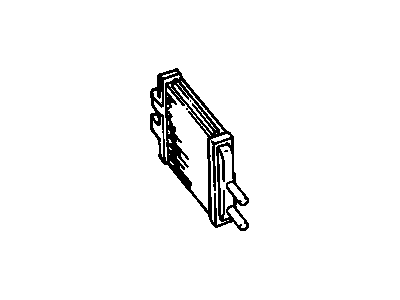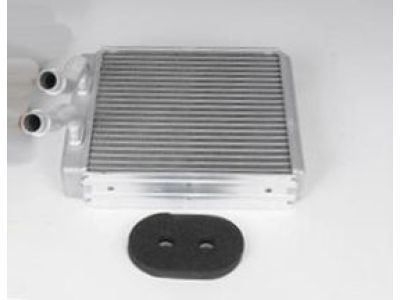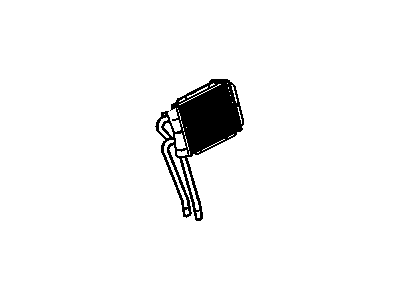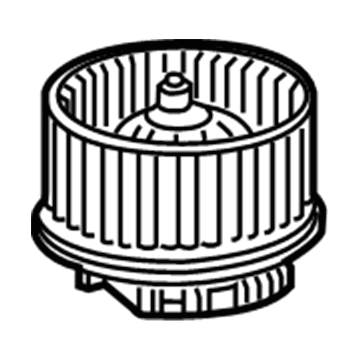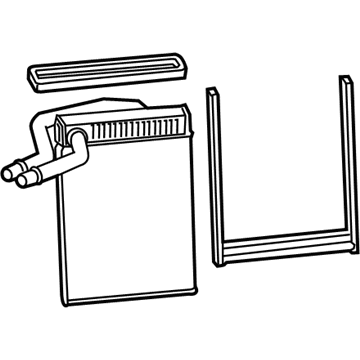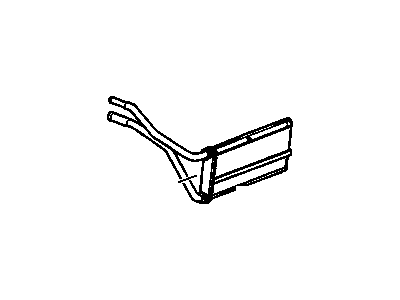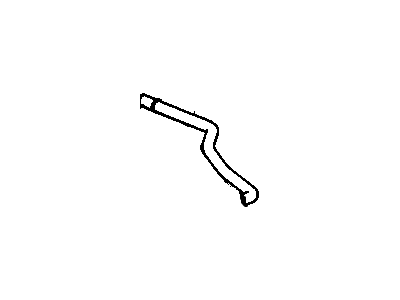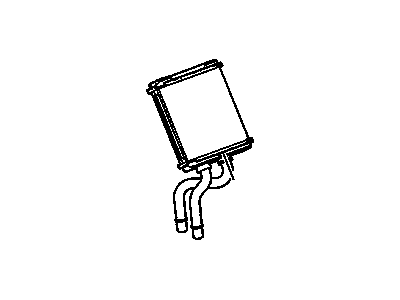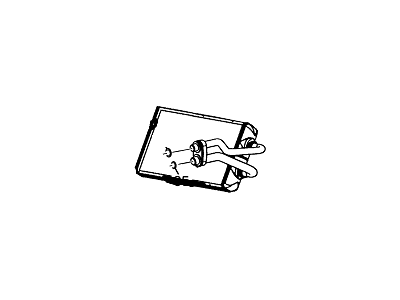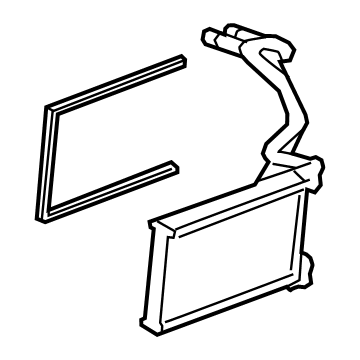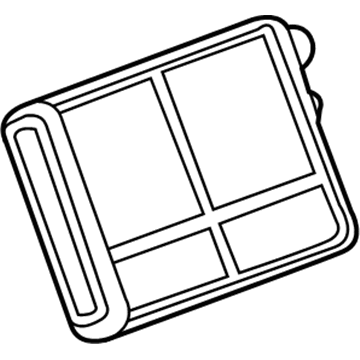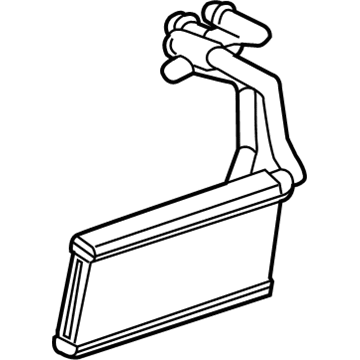
My Garage
My Account
Cart
Genuine Cadillac Heater Core
HVAC Heater Core- Select Vehicle by Model
- Select Vehicle by VIN
Select Vehicle by Model
orMake
Model
Year
Select Vehicle by VIN
For the most accurate results, select vehicle by your VIN (Vehicle Identification Number).
38 Heater Cores found
Cadillac Core Asm,Heater
Part Number: 89018297$157.73 MSRP: $325.56You Save: $167.83 (52%)Ships in 1-2 Business DaysProduct Specifications- Other Name: CORE, Heater Core; Heater Core
- Replaces: 52473326, 52473322
Cadillac Core,Heater
Part Number: 89019173$99.58 MSRP: $205.54You Save: $105.96 (52%)Ships in 1-2 Business DaysProduct Specifications- Other Name: CORE, Heater Core; Heater Core
- Replaces: 52467018
Cadillac Core Kit, Htr
Part Number: 84406079$85.19 MSRP: $174.30You Save: $89.11 (52%)Ships in 1-2 Business DaysProduct Specifications- Other Name: Heater Core
- Replaces: 15232212
- Product Specifications
- Other Name: HEATER, Heater; Heater
- Replaces: 22792167, 22788440, 22794426
Cadillac Core Assembly, Heater
Part Number: 22784517$106.24 MSRP: $200.46You Save: $94.22 (47%)Ships in 1-2 Business DaysProduct Specifications- Other Name: CORE, Heater Core; Core, Heater Core
- Replaces: 52462735, 52470154, 89019251
Cadillac Core Asm,Heater
Part Number: 19258989$134.69 MSRP: $278.00You Save: $143.31 (52%)Ships in 1-2 Business DaysProduct Specifications- Other Name: CORE, Heater Core; Heater Core
- Replaces: 88986627
Cadillac Core Asm,Auxiliary Heater
Part Number: 52478848$60.35 MSRP: $113.86You Save: $53.51 (47%)Ships in 1-2 Business DaysProduct Specifications- Other Name: CORE, Heater Core; Heater Core
Cadillac Heater Assembly, .
Part Number: 84418887$96.00 MSRP: $285.38You Save: $189.38 (67%)Ships in 1-2 Business DaysProduct Specifications- Other Name: Blower Motor, Heater Core
- Replaces: 22808761, 23281453
Cadillac Core Kit,Heater
Part Number: 13406298$60.25 MSRP: $179.12You Save: $118.87 (67%)Ships in 1-2 Business DaysProduct Specifications- Other Name: CORE KIT, Heater Core; Heater Core
- Replaces: 20782084, 13263329
Cadillac Core Kit, Htr
Part Number: 84760093$89.10 MSRP: $183.91You Save: $94.81 (52%)Ships in 1-3 Business DaysProduct Specifications- Replaces: 84206592
Cadillac Heater Assembly, .
Part Number: 84418888$100.33 MSRP: $207.07You Save: $106.74 (52%)Ships in 1-2 Business DaysProduct Specifications- Other Name: Heater Core
- Replaces: 22933441, 23281454
Cadillac Core Assembly, Heater
Part Number: 25770667$69.65 MSRP: $143.75You Save: $74.10 (52%)Ships in 1-2 Business DaysProduct Specifications- Other Name: CORE, Heater Core; Heater Core
Cadillac Core Asm,Heater
Part Number: 89022548$70.90 MSRP: $133.78You Save: $62.88 (47%)Ships in 1-2 Business DaysProduct Specifications- Other Name: CORE, Heater Core; Heater Core
Cadillac Core Assembly, Htr
Part Number: 84215014$79.54 MSRP: $164.15You Save: $84.61 (52%)Ships in 1-2 Business DaysProduct Specifications- Other Name: Heater Core
- Replaces: 23506093
Cadillac Core Kit, Htr
Part Number: 84633310$163.95 MSRP: $338.40You Save: $174.45 (52%)Ships in 1-2 Business DaysProduct Specifications- Other Name: Heater Core
- Replaces: 23416439, 22743907, 23344144
Cadillac Core Assembly, Auxiliary Heater
Part Number: 25882728$71.81 MSRP: $148.22You Save: $76.41 (52%)Ships in 1-2 Business DaysProduct Specifications- Other Name: CORE, Heater Core; Heater Core
- Replaces: 15225891
Cadillac Core Kit,Heater
Part Number: 89019028$175.85 MSRP: $331.80You Save: $155.95 (47%)Ships in 1-2 Business DaysProduct Specifications- Other Name: CORE KIT, Heater Core; Heater Core
- Replaces: 89018262
Cadillac HEATER ASM-.
Part Number: 85108010$64.98 MSRP: $122.60You Save: $57.62 (47%)Ships in 1-2 Business DaysProduct Specifications- Other Name: Heater Core
- Replaced by: 87846949
Cadillac Core Kit, Htr
Part Number: 84406414$75.65 MSRP: $142.75You Save: $67.10 (48%)Ships in 1-2 Business DaysProduct Specifications- Other Name: Heater Core
- Replaces: 84055894
Cadillac Core Assembly, Htr
Part Number: 84280246$59.14 MSRP: $111.57You Save: $52.43 (47%)Ships in 1-2 Business DaysProduct Specifications- Other Name: Heater Core
- Replaces: 22799386
| Page 1 of 2 |Next >
1-20 of 38 Results
Cadillac Heater Core
For superior quality and affordable Cadillac Heater Cores, consider our website. We proudly present a wide selection of genuine Cadillac Heater Cores at unbeatable prices. These OEM parts, supported by the manufacturer's warranty, are also eligible for our hassle-free return policy and swift delivery service.
Cadillac Heater Core Parts Questions & Experts Answers
- Q: How to diagnose and repair issues with the blower motor and heater core performance on Cadillac Fleetwood?A:If the blower motor does not operate, check the blower motor fuse and replace it if necessary, inspect the wiring for loose, damaged, or corroded contacts and repair as needed, examine the blower motor switch and resistor pack for open circuits, and repair or replace them if required. For a heater that blows cool air, verify the engine coolant level, topping off and bleeding the air from the cooling system if low, and check for leaks. Ensure the engine coolant operating temperature is within specification, and if it is below, investigate a potentially damaged or stuck thermostat. Assess the heater control valve operation, ensuring the cable or vacuum hose is properly installed, and test the valve by moving the heater temperature control from hot to cold. With the engine at normal operating temperature and the control in the full hot position, feel the heater hoses; if one is hot and the other is much cooler, replace the control valve. If the heater steams the windshield when used, check for a loose cooling system hose clamp or leaking coolant hose near the engine firewall or under the dash, and repair as necessary. Look for a sweet odor and fluid dripping from the heater floor vents, which may indicate a failed or damaged heater core. Pressure test the cooling system with the heater set to the fully warm position and check for fluid leakage from the floor vents; if leakage is confirmed, remove and replace the heater core assembly, noting that on some vehicles, disassembly and removal of the dashboard may be required to access the heater core.
Related Cadillac Parts
Browse by Model
ATS Heater Core Allante Heater Core Brougham Heater Core CT4 Heater Core CT5 Heater Core CT6 Heater Core CTS Heater Core Catera Heater Core Cimarron Heater Core DTS Heater Core Deville Heater Core ELR Heater Core Eldorado Heater Core Escalade Heater Core Fleetwood Heater Core LYRIQ Heater Core SRX Heater Core STS Heater Core Seville Heater Core XLR Heater Core XT4 Heater Core XT5 Heater Core XT6 Heater Core XTS Heater Core
